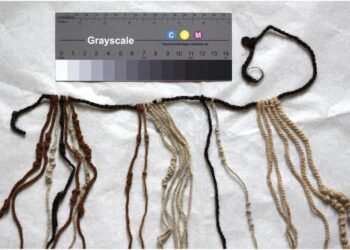Archaeologists from National Tsing Hua University in Taiwan have unearthed a 4,000-year-old snake-shaped pottery handle in the Guanyin District of Taoyuan City. The handle, resembling a cobra with its raised head and distinctive features, was found during excavations on the northwest coast of Taiwan.

This Neolithic artifact, likely used in ancient rituals, is believed to have been part of a vessel utilized by shamans for sacrificial purposes in tribal societies. Hung-Lin Chiu, an associate professor at the Institute of Anthropology at Tsing Hua, highlighted the symbolic importance of snakes in various cultures, noting their representation as a bridge between heaven and man, as well as symbols of creation and transition.
The discovery underscores the widespread presence of snake iconography in ancient societies, with snakes often revered for their symbolic significance in religion, mythology, and literature.
Furthermore, the archaeological site where the artifact was found has yielded other significant findings, including a large-scale stone tool processing area. This area, rich in stone cores and flakes, provides further information about ancient manufacturing techniques and societal practices during Taiwan’s prehistoric era.
The snake-shaped pottery handle adds to a growing body of archaeological evidence showcasing the cultural and ritualistic practices of ancient civilizations. Its discovery highlights the relationship between humans and the natural world, as well as the significance of symbolic imagery in shaping belief systems and cognitive frameworks across millennia.
Hung-Lin Chiu said: “This reflects that ancient societies incorporated animal images into ritual sacrificial vessels to demonstrate their beliefs and cognitive systems.”























